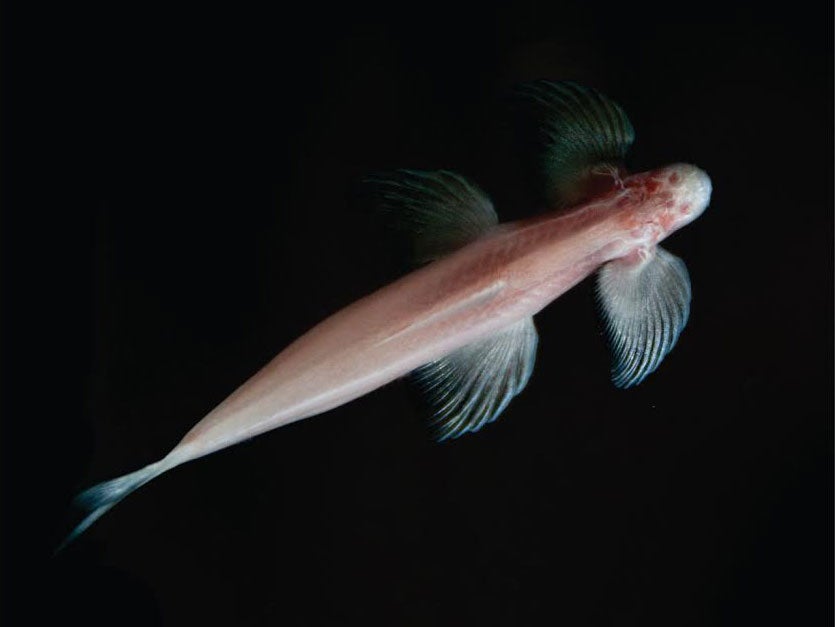The Independent's journalism is supported by our readers. When you purchase through links on our site, we may earn commission.
Blind cave fish found walking up waterfalls in 'major' evolutionary discovery
The anatomy of the fish could help us understand how our ancestors evolved

A species of cave fish has been documented 'walking' up waterfalls like a lizard, in a discovery which could have "major" implications for our understanding of evolution.
A team of researchers from the New Jersey Institute of Technology (NJIT) travelled to Thailand to study the Cryptotora thamolica, a species of blind fish found in a handful of caves. Only around 2,000 of them exist in the wild.
There are other types of fish which use their fins to 'walk' across the sea bed, usually with a rudimentary hopping motion. The cave fish is very different, however, since it climbs up steep rock faces covered by fast-moving waterfalls using its fins, moving in a similar way to a salamander.
Videos of the fish show this unusual movement - twisting its body from side-to-side, it uses its front and rear fins to take steps up the face of the waterfall. To the untrained eye, it looks more like a lizard than a fish.
A study detailing the team's discovery, which was contributed to by Thai researchers and includes the findings of a CT scan of a specimen, was published in the high-profile Nature Scientific Reports journal on 24 March.
Speaking about the investigation, Brooke Flammang from the NJIT said she had never come across a similar creature in her entire career.
She said: "From an evolutionary perspective, this is a huge finding. This is one of the first fish that we have which is a living species, which acts in a way we think fish must have acted when they evolved from a fluid environment to a terrestrial environment at the very beginning of the fin-to-limb transition, when the first limbs evolved in our earliest ancestors."
In effect, the humble cave fish can offer biologists a glimpse of what life may have looked like around 400 million years ago, when the oldest ancestors of humans began to walk on the land.
Since the fish are so rare, it's difficult to study them with conventional means. More investigations will need to take place to unlock its significance for evolution.
The species' lack of eyes also throws up more important questions for researchers.
"How do they find each other and make babies? How do they sense where their food is?"
"All of these are interesting and important questions," Flammang said.
Join our commenting forum
Join thought-provoking conversations, follow other Independent readers and see their replies
Comments
Bookmark popover
Removed from bookmarks